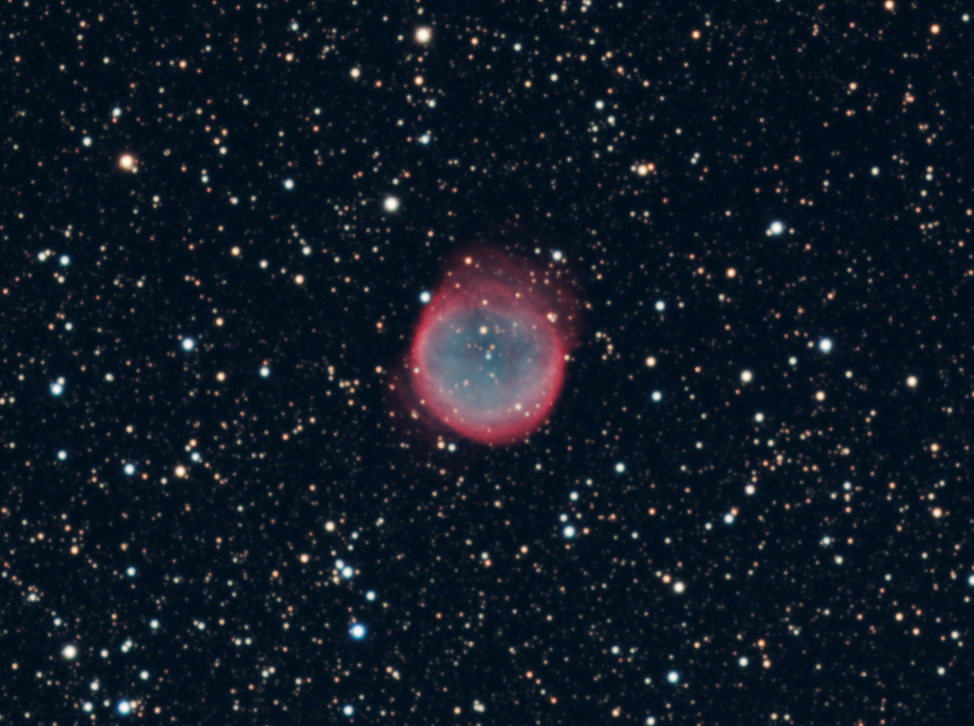
NGC 6781 is a planetary nebula located in the constellation Aquila. The magnitude 12.5 nebula has a size of 1.8 arc-minutes. The glowing shell of gas is a cosmic bubble ejected by a dying star, i.e., the blue star visible in this image at the center of the shell. The gasses forming the nebula fluoresce as a result of ultraviolet radiation from the magnitude 15.5 central star. The progenitor star is on its way to becoming a white dwarf star in which nuclear fusion has ceased. The remains of the star will eventually cool into oblivion after the ejected gas has dispersed into space. The white dwarf star takes a long time to cool, but after many millions of years, it will become a dark earth-size ember floating in deep space.
Click on the above image for a larger version of the image.
Planetary nebulae are formed by an expanding shell of gas that is the ejected surface of a star during the latter stages of stellar evolution. When a star reaches this stage of evolution, it has burned its available hydrogen and helium. When a sun-like star's helium is gone, the core collapses into a white dwarf star.
This is an LRGB composite CCD image taken with the 32-inch Schulman Telescope on the summit of Mount Lemmon, Arizona, at the University of Arizona SkyCenter. The telescope was operated remotely. We were very lucky to have clear skies on a summer night during the middle of monsoon season in Arizona.
NGC 6781
Constellation: Aquila
RA: 19h 18m 28.3s Dec: +06d 32' 25"
(J2000)
July 3, 2016
Image by Sid Leach and Francisco Arabia
Mount Lemmon, Arizona
Recent Images.
Complete list of images.
Description of equipment used to acquire images.
Home
Feedback and comments should go to Sid